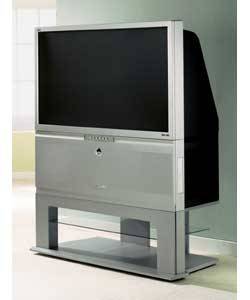 If you owned a TV with a screen bigger than 40 inches before the year 2000, chances are it was a rear projection model. And chances are it took up most of your loungeroom.
If you owned a TV with a screen bigger than 40 inches before the year 2000, chances are it was a rear projection model. And chances are it took up most of your loungeroom.
Rear projection TV were increasingly popular back in the 90s and early this decade thanks to their large screen sizes and relatively affordable price tags – especially when compared to the early asking price of LCD and plasma displays. They use three main technologies to project the image from inside the body to the screen: CRT, LCD and DLP.
But unfortunately, the technology was held back by its shortcomings and the dropping price of LCDs and plasmas. Because they projected an image, they were deep, needing the space inside the body to be able to throw the image from the projector to the screen. That meant they couldn’t be wall mounted, and tended to take up a lot of space.
Nowadays, there’s nary a rear projection TV to be found in the shops. Most of the major TV players have stuck their flags in the plasma or LCD camps (or both) and left rear projection behind. The noted exception is Mitsubishi, who have further developed the technology with the introduction of lasers, which both improves picture quality and lessens the necessary depth of the TV – their LaserVue sets are actually wall mountable. Still, that doesn’t mean that the technology hasn’t been superceded – despite having a great few years when most big TVs sold were big and bulky, these days you’re safer to go a flat panel TV.
History of TV is Giz AU’s month-long look back at the development of the world-changing medium and its influence on our daily lives.